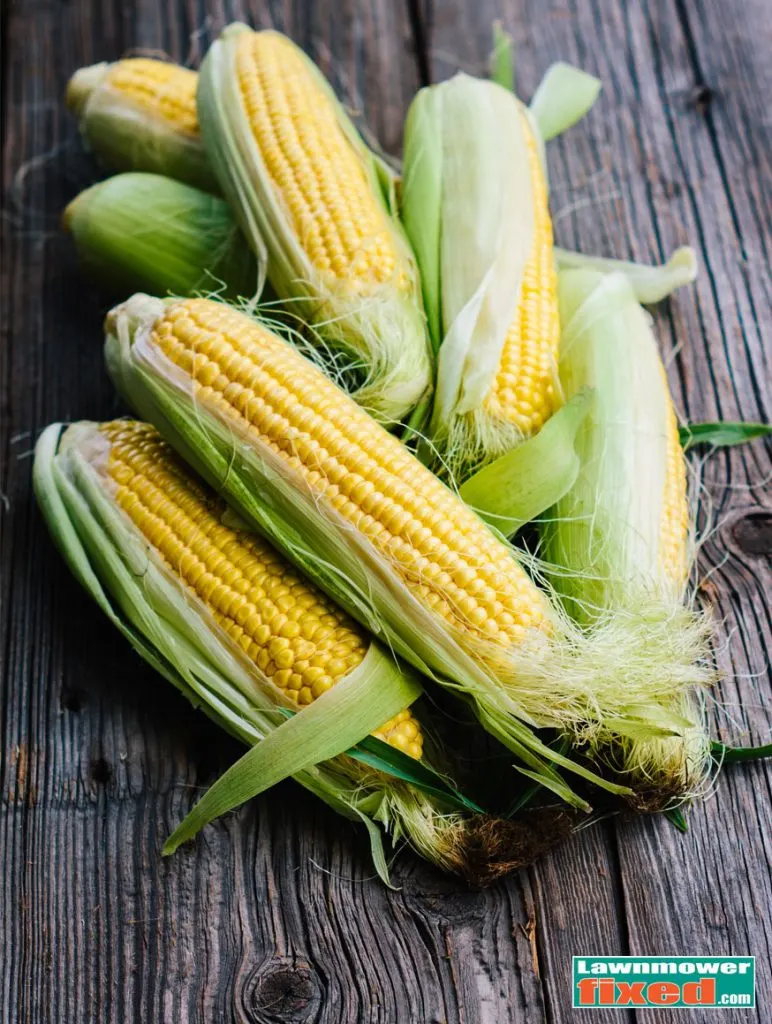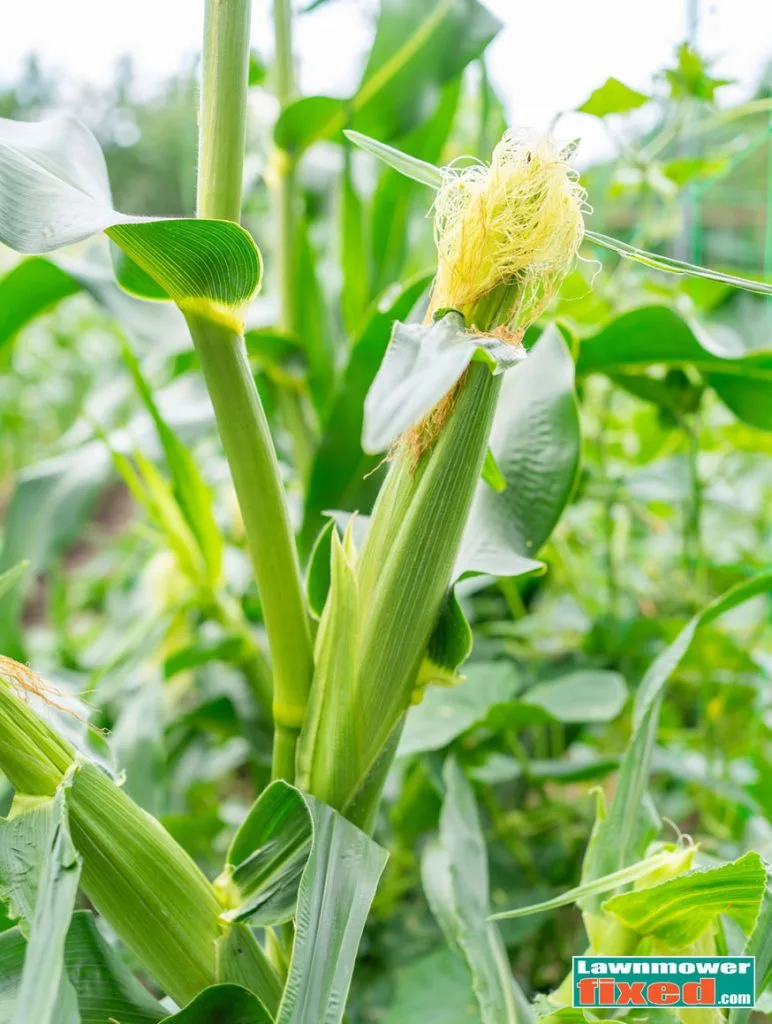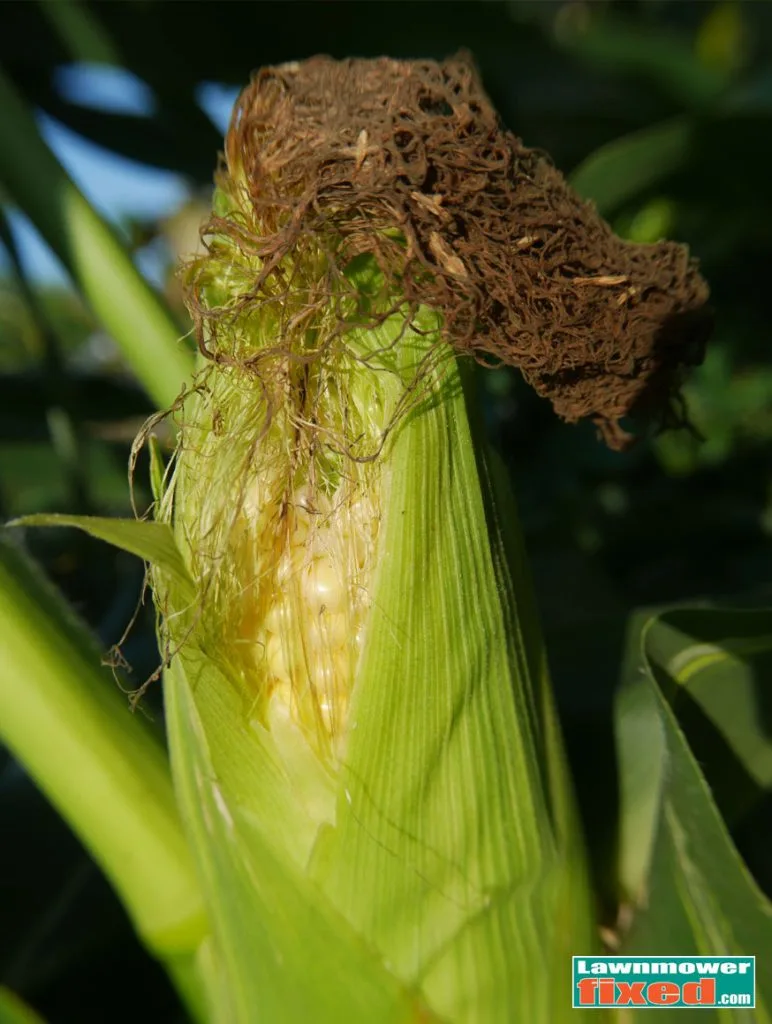There’s something truly satisfying about growing your own corn. Those tall green stalks swaying in the breeze, the thrill of peeling back a husk to reveal golden kernels — and the unbeatable taste of just-picked corn on the cob.

But corn can be a little trickier than some other crops. It’s fast-growing, but fussy. Hungry, but worth the space.
Here’s everything you need to know to grow sweet corn successfully in your garden.
Start With the Right Spot
Corn loves the sun. Choose the sunniest, warmest spot in your garden — one that gets at least 6–8 hours of direct light per day. Corn also needs rich, fertile soil with good drainage. It’s a heavy feeder, so mix in well-rotted manure or compost before planting.
Soil pH tip: Corn prefers a slightly acidic to neutral pH (around 6.0 to 6.8). If your soil is off, consider adjusting it with lime or sulphur as needed.
Best Corn Varieties for Home Gardens
Not all corn is created equal — some types are bred for flavour, others for storage or popcorn. For a beginner-friendly crop that tastes amazing straight off the cob, stick to sweetcorn, and look for these reliable, fast-growing types:
Easy + Reliable Sweetcorn Varieties:
- ‘Swift’ – A super-early variety that matures in cooler climates. Compact, ideal for smaller gardens.
- ‘Early Extra Sweet’ (F1) – Fast-growing and well-suited to short summers. Tender, sugary kernels.
- ‘Golden Bantam’ – An heirloom favourite with classic corn flavour. Not as sweet as modern hybrids, but dependable and easy to grow.
- ‘Sweet Nugget’ (F1) – High-yielding and great for small plots.
- ‘Honey Select’ (TripleSweet Hybrid) – Combines tenderness with long-lasting sweetness, great flavour and texture.
Tip: Look for “F1 hybrid” in the name if you want higher yields and disease resistance. Look for “early” if you’re in a cooler or short-season area.
Seeds or Transplants? (And When to Start)

Corn is best direct sown. The roots don’t love being disturbed, and transplanting can slow growth unless done with extra care. That said:
- In cooler climates, you can start corn indoors in biodegradable pots (so you can plant the whole pot without disturbing the roots). Start them about 3 weeks before your last frost date.
- Direct sow once the soil is warm — at least 10°C (50°F), but ideally closer to 16°C (60°F). Corn is sensitive to cold soil and won’t germinate well otherwise.
Planting depth: Sow seeds 2.5–4 cm (1–1.5 inches) deep.
Spacing: Plant in short blocks, not single rows — more on that below.
The Secret to Pollination Success: Plant in Blocks
Here’s the number one beginner mistake: planting corn in a single row. Corn is wind-pollinated, and the pollen needs to fall from the tassels (the top of the plant) down onto the silks (the part that sticks out of the cob).

If you plant in one long row, the wind can’t do its job.
Plant corn in blocks — at least 3 to 4 rows side by side — even if each row only has 4–5 plants. This boosts pollination and gives you more full, well-filled cobs.
Should You Hand-Pollinate?
In small gardens — especially if you don’t have many plants — it can be worth giving nature a hand:
How to hand-pollinate corn:
- When tassels release yellowish powder (pollen), gently shake the stalk or bend the tassel over the silks.
- You can also collect pollen in a paper bag and dust it over the silks by hand.
- Aim to do this mid-morning for a few days in a row — silks stay receptive for about a week.

This is especially helpful if you only have a small block of corn or very still, windless weather.
Watering and Feeding Corn
Corn grows fast, and it’s thirsty and hungry. Here’s how to keep it happy:
- Water deeply and regularly, especially once the tassels and silks appear. Drought at this stage results in poor kernel formation.
- Mulch to hold in moisture and suppress weeds.
- Feed with a high-nitrogen fertilizer every 2–3 weeks after germination. A liquid seaweed or organic granular feed works well.
Pests and Problems to Watch Out For
Corn has a few enemies — but most can be kept in check with a bit of vigilance:
Common Problems:
- Poor pollination → leads to cobs with missing kernels. Fix this by planting in blocks, or even hand-pollinate by shaking the tassels gently when they appear.
- Slow growth or yellowing leaves → often due to nutrient deficiencies, especially nitrogen.
- Stunted plants → could be due to overcrowding, poor soil, or cold weather early on.
Pests:
- Corn Earworm: They chew into the tips of cobs. Use fine mesh bags or natural deterrents like neem oil.
- Cutworms: These chew seedlings at the base. Use collars or barriers at planting time.
- Birds: Love pulling up young seedlings. Protect with netting until plants are established.
Diseases to Look Out For

Corn is mostly resilient, but a few diseases can show up in wet or humid conditions:
- Common Rust: Red-brown pustules on leaves. Remove affected leaves and space plants well for airflow.
- Corn Smut: Grey, swollen growths on cobs or stems. Remove and destroy infected plants. Don’t compost.
- Leaf Blights: Caused by fungi, leading to large lesions on leaves. Practice crop rotation and avoid overhead watering.
How Many Should You Plant?
Each corn stalk usually produces 1–2 good ears. So think about how much you want to harvest. For a small family, plant at least 20–30 plants for a few meals’ worth of corn.
Remember — corn is not great as a single plant. It needs friends to pollinate properly, so aim for a minimum of 12 plants in a block for any real success.
When to Harvest
Corn is ready to harvest when:
- The silks have turned brown and dry.
- Kernels feel plump and squirt milky juice when pierced with a fingernail.
- Cobs feel full and heavy in your hand.

Timing is key. Too early, and it’ll be underdeveloped. Too late, and it’ll be starchy.
Quick Corn Growing Checklist
- Choose a full sun spot
- Enrich soil with compost or manure
- Direct sow when soil is warm (or transplant very gently)
- Plant in blocks, not rows
- Feed and water consistently
- Watch for pests and pollination issues
- Harvest at the right time for sweet, juicy kernels
Final Thoughts
Corn isn’t the most low-maintenance crop — but it’s absolutely doable in a home garden with a bit of planning. Get the spacing right, feed it well, and keep it watered — and the rewards are golden. Quite literally.

